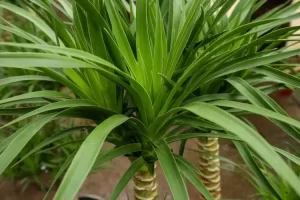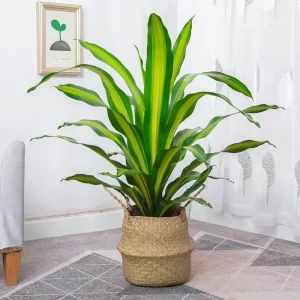- English
- Chinese
- French
- German
- Portuguese
- Spanish
- Russian
- Japanese
- Korean
- Arabic
- Irish
- Greek
- Turkish
- Italian
- Danish
- Romanian
- Indonesian
- Czech
- Afrikaans
- Swedish
- Polish
- Basque
- Catalan
- Esperanto
- Hindi
- Lao
- Albanian
- Amharic
- Armenian
- Azerbaijani
- Belarusian
- Bengali
- Bosnian
- Bulgarian
- Cebuano
- Chichewa
- Corsican
- Croatian
- Dutch
- Estonian
- Filipino
- Finnish
- Frisian
- Galician
- Georgian
- Gujarati
- Haitian
- Hausa
- Hawaiian
- Hebrew
- Hmong
- Hungarian
- Icelandic
- Igbo
- Javanese
- Kannada
- Kazakh
- Khmer
- Kurdish
- Kyrgyz
- Latin
- Latvian
- Lithuanian
- Luxembou..
- Macedonian
- Malagasy
- Malay
- Malayalam
- Maltese
- Maori
- Marathi
- Mongolian
- Burmese
- Nepali
- Norwegian
- Pashto
- Persian
- Punjabi
- Serbian
- Sesotho
- Sinhala
- Slovak
- Slovenian
- Somali
- Samoan
- Scots Gaelic
- Shona
- Sindhi
- Sundanese
- Swahili
- Tajik
- Tamil
- Telugu
- Thai
- Ukrainian
- Urdu
- Uzbek
- Vietnamese
- Welsh
- Xhosa
- Yiddish
- Yoruba
- Zulu
- Kinyarwanda
- Tatar
- Oriya
- Turkmen
- Uyghur

Dracaena Arborea: Flower’s “Long Live Lord”
The life periods of different plants vary throughout the floral universe. While some plants, like Epiphyllum, bloom only once and have a brief life, others may live hundreds or even thousands of years. We are going to unveil in the plant world today a foliage plant known as the “Long Live Lord,” Dracaena Arborea. Along with being evergreen all year long and looking straight forward, it has a lengthy life and a mystery past. Dracaena Arborea is sometimes known as Dragon beard Orchid in northern parts. It is passionately dubbed “Dragon Blood,” also derived from its bark, which would flow dark crimson blood after being sliced. People adore Dracaena Arborea not only because it is a perfect fit for household green plants but also because it is said to protect the house and bless lifetime.

Dracaena Arborea
The enigmatic beginning of the Dracaena Arborea name
Dracaena Arborea is a rare plant with most remarkable characteristics related to crimson sap. Under pressure or during cutting of the bark, this crimson liquid comes out. It is called Dragon Blood Tree as its hue matches the fable dragon blood. Dried this sap is known as “blood sap”. This valuable Chinese medical tool has properties of enhancing blood circulation, clearing blood stasis, and thus reducing pain. In the long-standing culture, the name of the dragon blood tree has great symbolic importance. Because of its enigmatic “dragon blood,” it is not only seen as a sign of longevity and energy but also loaded with extra legendary hues.
The dragon blood tree has very tenacious vigor. In the natural surroundings, it can adapt to many demanding living circumstances. The crown is chopped off, hence even if it is badly injured, it may still sprout and develop once more at the root or other stem segment. Its persistent survival capacity distinguishes it in the plant world and qualifies as a real “Long Live Lord”. Historical accounts state that the oldest dragon blood tree has a more than 8,000 year history; in other stories, there are even dragon blood trees that have survived for tens of thousands of years. Among those who like gardening, such energy has gained great respect.
Care and raising of Dracaena Arborea
Potting soil choice and substitution
The Dracaena Arborea has tenacious life, but it still need appropriate maintenance to let it flourish in a household setting. First of importance is the potting soil selection. Usually advised to use a deeper flower pot, which can give ample growing room for the dragon blood tree’s roots, the root system of the tree is very developed. The dragon blood tree enjoys loose, rich soil. Mix leaf mold and coarse river sand in a 1:1 ratio, then add a little organic fertilizer as foundation fertilizer; this is the ideal soil formula. This mix can guarantee the air permeability of the soil, which is favorable for the growth of the dragon blood tree, and still provide enough nourishment.
The large root system of the dragon blood tree will progressively occupy the soil in the flower pot, therefore influencing the usual development of the plant. One should so repot every one to two years, ideally in spring or fall. Pay close care to correctly pruning the old soil and roots, eliminating the withered or rotting sections, and maintaining fresh and breathable soil while repotting. Apart from giving extra growing room, regular repotting helps to avoid soil compaction and preserves the good development of the plant.
Temperature and lighting control
Native to tropical climates, the dragon blood tree is a sun-loving plant so it need enough light to keep its rich leaves and good development. Particularly in spring and fall, when the sunshine is moderate and rather fit for photosynthesis, the dragon blood tree should be positioned in house maintenance next to a sunny window or balcony. But in summer, particularly around midday, the dragon blood tree should be correctly shaded to save the leaves from burning from too intense sunlight. The dragon blood tree gathers vitality from the direct exposure to the sunshine in the morning and evening.
The dragon blood tree is very adaptable and can thrive in a gloomy setting; yet, a protracted absence of light will cause the plant to develop slowly and dull the leaves. Thus, you should strive to provide the dragon blood tree certain lighting circumstances even in winter or rainy days to keep its regular development condition.
Though the dragon blood tree is quite cold-resistant in terms of temperature, excessive low temperatures should still be avoided. The range of appropriate growth temperatures is five to thirty-five degrees Celsius. The dragon blood tree’s leaves will start to wither and fall off in winter when the temperature is below five degrees Celsius; the young leaves will become weak and readily broken. Long-term low temperature environments will have a significant impact on the general development status of the dragon blood tree, hence maybe leading to plant mortality. To prevent freezing in cold seasons, therefore, it is advisable to relocate the dragon blood tree to a warm room.
Hydration and humidity management
various growth seasons call for various water needs from dragon blood trees. Dragon blood trees grow quickly in spring and fall; water roughly once every ten days will satisfy their demands. Water should be watered once every seven days in summer to maintain the hydration of the soil because of the hot weather and quick evaporation of water. The dragon blood tree becomes dormant in winter as the temperature decreases; the need for water is much less, hence watering once every 15 days or so is enough.
It should be mentioned that avoiding root rot requires careful water buildup avoidance during irrigation. Adopting the “see dry and see wet” watering concept—that is, watering after the surface of the soil is dry—is the best approach. Furthermore, dragon blood trees want a humid atmosphere; hence, you may assist them in dry season growth by raising air humidity. While both using a humidifier or misting water over the leaves routinely are wonderful ideas, avoid leaving the leaves wet for too long to stop mold development.
Maintenance of leaves and management of pests and diseases
Although during upkeep dragon blood trees are quite disease-resistant, pest and disease management still has to be given first priority. Red spiders, scale insects, etc., common pests will drain the juice of the leaves, turning the leaves yellow and dry. Regular inspections of the plants—especially on the back of the leaves and close to the roots—should help to prevent pests from invading by spotting and addressing issues early on. For damaged plants, treat them with a particular pesticide or wash their leaves with soapy water.
Regular leaf cleaning is also essential to maintain the dragon blood tree lovely and healthy. The dragon blood tree’s big leaves enable dust to build up quickly, which will influence the plant’s photosynthesis. To keep the leaves neat, lightly wipe them with a moist towel. Simultaneously, the cleaning operation is a fantastic chance to monitor plant health, identify issues early on and address them.
Dracaena Arborea Home Decoration and Feng Shui
People like dragon blood trees not only for their tenacious vigor and longevity but also for their significant place in Feng Shui; they have become a common option for house décor. Feng Shui philosophy holds that the dragon blood tree increases riches and fortune and helps to fight off bad spirits. Having a pot of dragon blood tree at home not only gives the inside some green but also has a good fortune symbolism. Particularly positioned southeast from the house, it may improve family fortune and draw the good energy collecting.
The dragon blood tree is also very beautiful as an interior foliage plant. Perfect for use in living rooms, study rooms, and other areas, its evergreen leaves have exquisite forms. All year long they are The dragon blood tree may provide the home environment a natural atmosphere and creative feeling whether it is alone as a single potted plant or combined with other green plants.

Dracaena
The Dracaena Arborea is a long-lived and low-maintenance foliage plant that belongs absolutely in home gardens. Its unusual “dragon blood” qualities give it a mystery appeal in addition to representing tenacious energy and lifespan. To ensure the Dracaena Arborea grows healthily and powerfully in daily maintenance, simply pay attention to appropriate light, temperature, and hydration management. The dragon blood tree may provide great beauty and benefits whether utilized as family green plant to be handed on or as house décor.
Previous News
Dieffenbachia Care EssentialNext News
Tips for keeping Dracaena Arborea healthy in wi...


